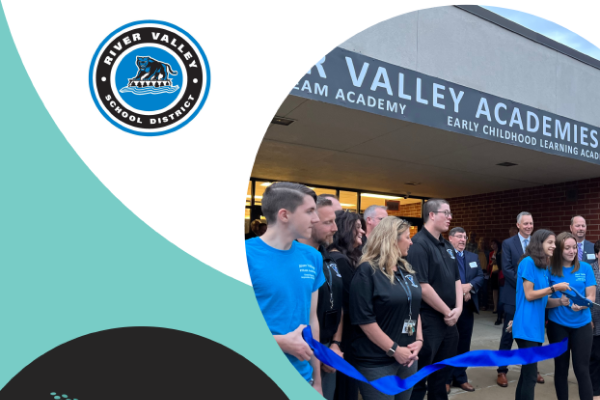Paving New Avenues for Career Training
November 01, 2019
Executive Perspective
If we were to ask a room full of parents how many of them want their children to graduate with a four-year college degree, probably everyone in the room would raise his or her hand. In reality, only four out of 10 parents will be able to brag about that
accomplishment.
As educators, we always push our students toward graduating from high school and going on to acquire a bachelor’s degree, yet only 34 percent of Americans over 35 today hold a four-year degree, according to the National
Student Clearinghouse. Recent reports have detailed the mounting debt college graduates carry.
At the same time, we hear cries for help from corporate America about the volume of skilled jobs that do not require a four-year degree that
remain unfilled and about how technology and artificial intelligence are changing the workplace and eliminating menial tasks. All of these factors are forcing educators to reconsider whether a college degree for all is the answer.
Many
high schools now offer alternative pathways to college and career. As early as the freshman year, students have opportunities to explore career options that don’t always require a four-year degree. Some students indicate that their biggest challenge
is persuading their parents that they do not want to pursue the college route. That is often the case with students who could be the first in their family to earn a college degree.
European Notions
We have created a culture that measures the worth of an individual by how much they earn and what degrees they possess. A skilled technician is not awarded the same respect as a physician or attorney. Consequently, students and their families feel pressured
to reach for a degree that the majority will fail to attain. Along the way, they also fail to acquire the job skills enabling them to earn a decent income.
The European apprenticeship program was developed in the Middle Ages and still thrives.
In my visits to programs throughout Europe, I learned that students, by the end of elementary school, are sorted into the academic or vocational track. The “gymnasium” students, as the academic track is labeled, will be prepared for university
attendance. Those on the vocational track will pursue apprenticeships and be prepared for the work world.
Given the shortage of skilled workers in the U.S. and the cost of a college education and the resulting debt load, interest is growing
significantly in youth apprenticeship programs in America.
AASA has committed to increasing the awareness level of superintendents about youth apprenticeship programs. We have started a campaign that highlights the benefits of apprenticeships
as a viable career pathway. We have highlighted case studies of successful programs in school districts. We also are developing a toolkit that is available on the AASA website, to which we will add rich resource materials, videos and references to
existing programs and related research.
We will convene superintendents, community college leaders and corporate executives that are collaborating on existing programs, as well as those interested in creating programs in their communities.
AASA’s youth apprenticeship summits will take place three times in 2019-20, the first in Denver on Nov. 14-15, and we hope you’ll join us at one.
Alternative Pathways
If we are to succeed in expanding this alternative pathway for all students across America, we will need to recognize that K-12 is the pipeline that will generate future apprentices. They will add to the growth of the workforce that businesses need. Although
formal youth apprenticeships do not usually start until the junior year in high school, career awareness can begin much earlier.
Existing successful youth apprenticeship programs share some common components. Each starts with classroom-based
academic instruction that relates to the job. This can be part of the career and technical education program offered at the high school. Second, there must be a partnership with a business or corporation that will provide on-the-job training and pay
the student for hours worked. This is usually about 10 hours per week and may include a summer job.
In addition, the local community college must offer dual enrollment opportunities related to the skills to be acquired, leading to an associate’s
degree and/or certification at-testing to the apprentice’s job qualifications.
AASA intends to create a cohort of superintendents interested in creating youth apprenticeship programs in their districts. The cohort approach has succeeded
in scaling up transformative educational practices. We will convene community college representatives and business and industry leaders and take advantage of the research to build career training options for the skilled workforce we need. We still
will encourage all students to pursue a four-year college degree, but we also will expose students to career alternatives.
Author
Advertisement
Advertisement
Advertisement
Advertisement



